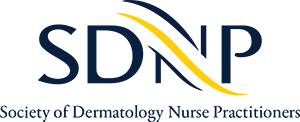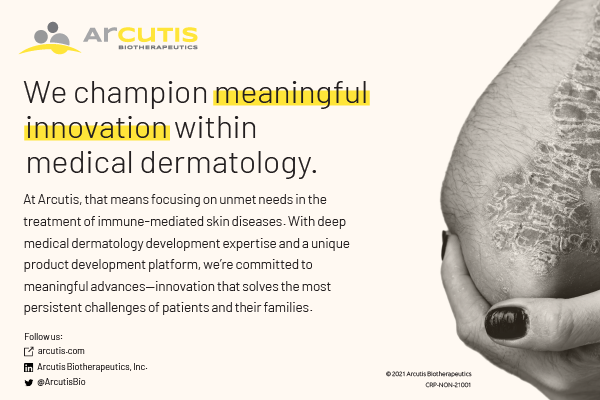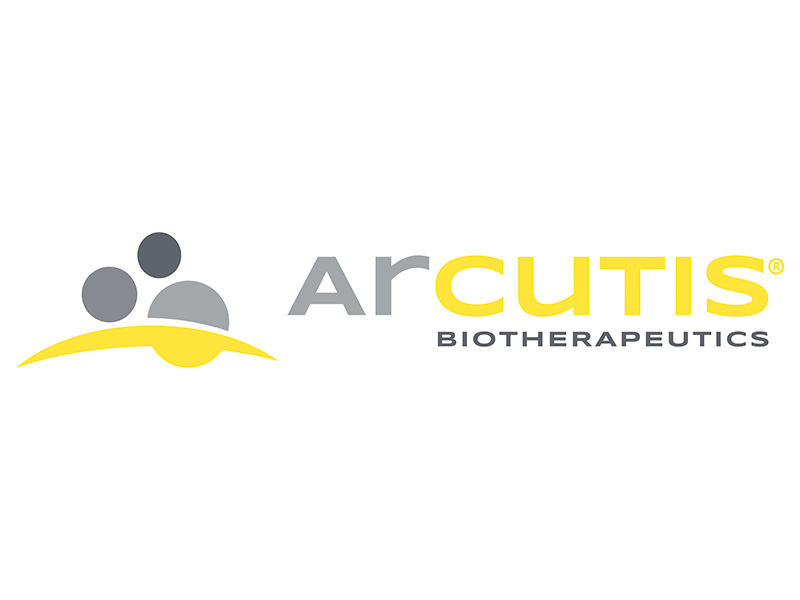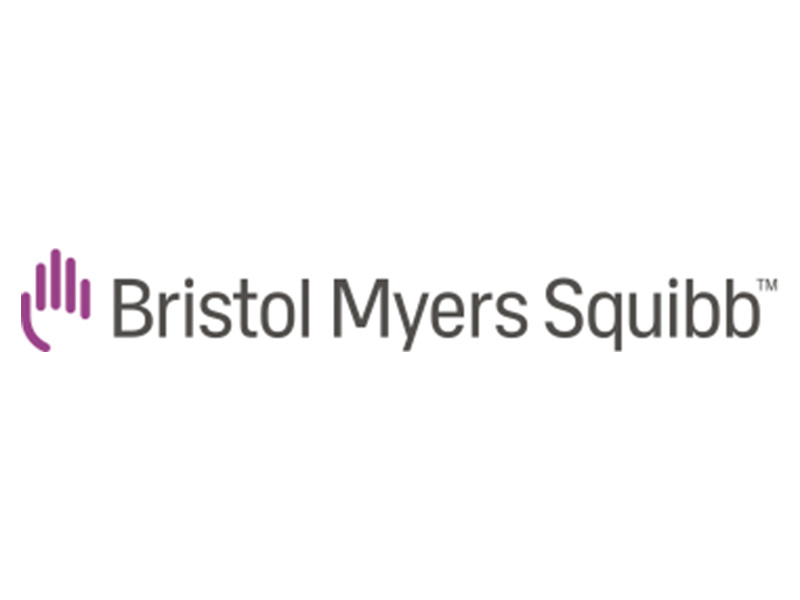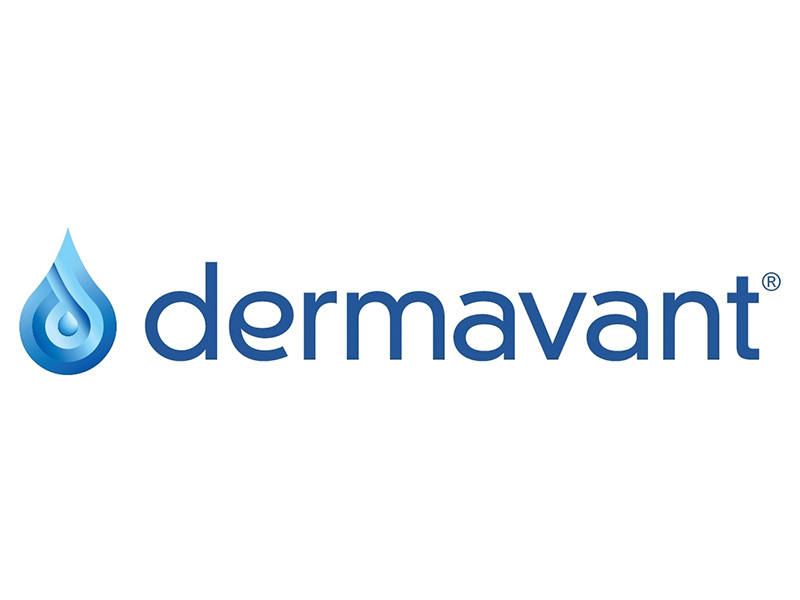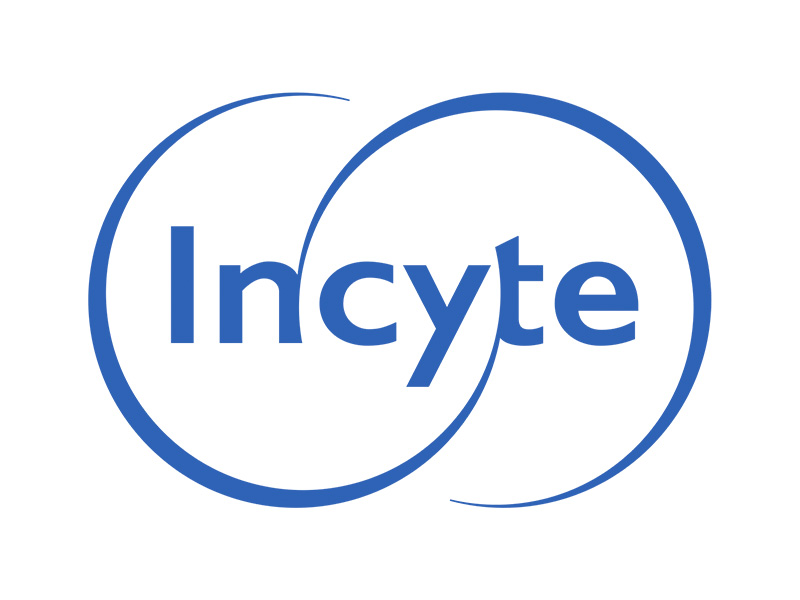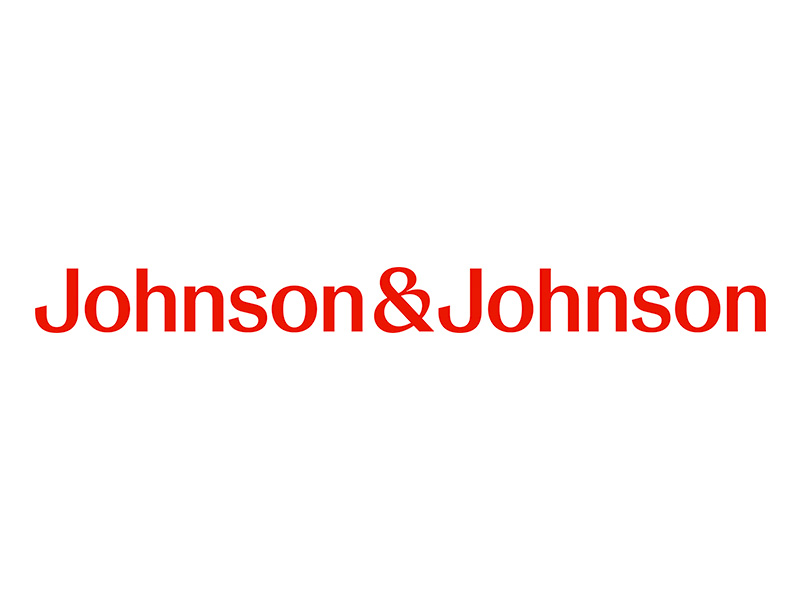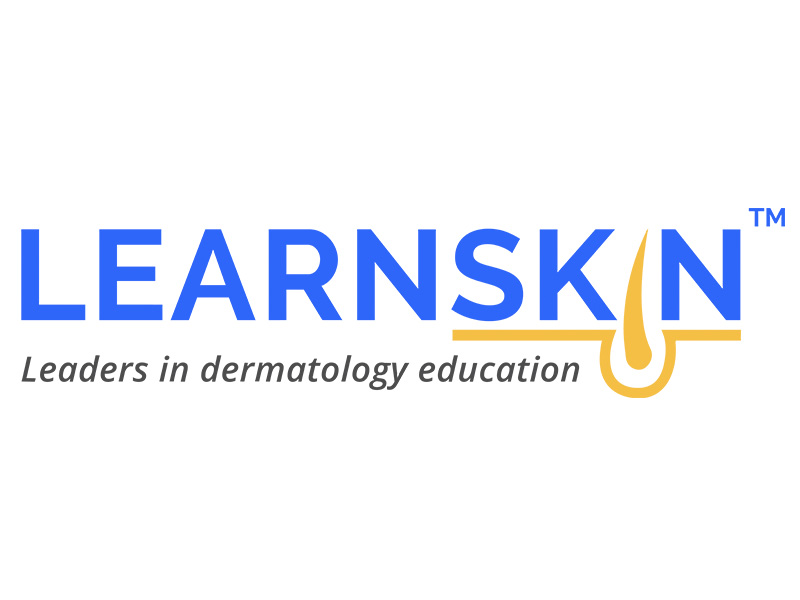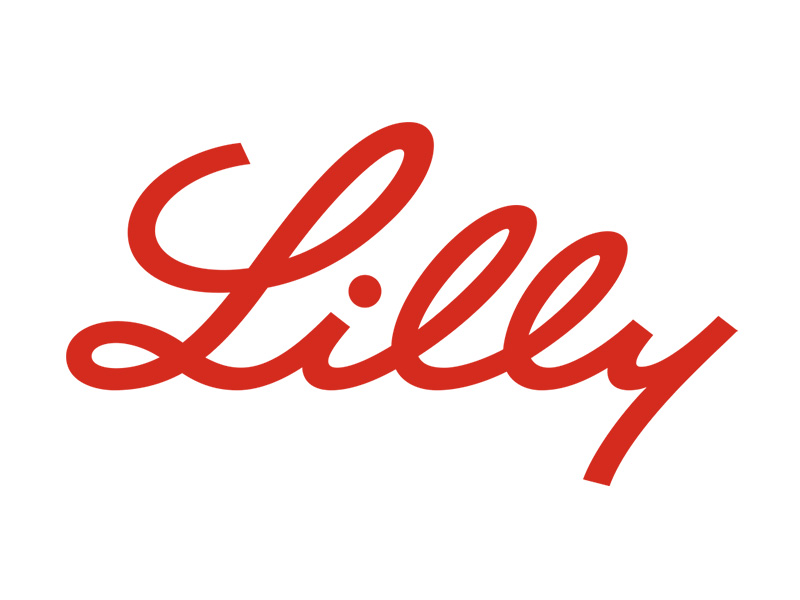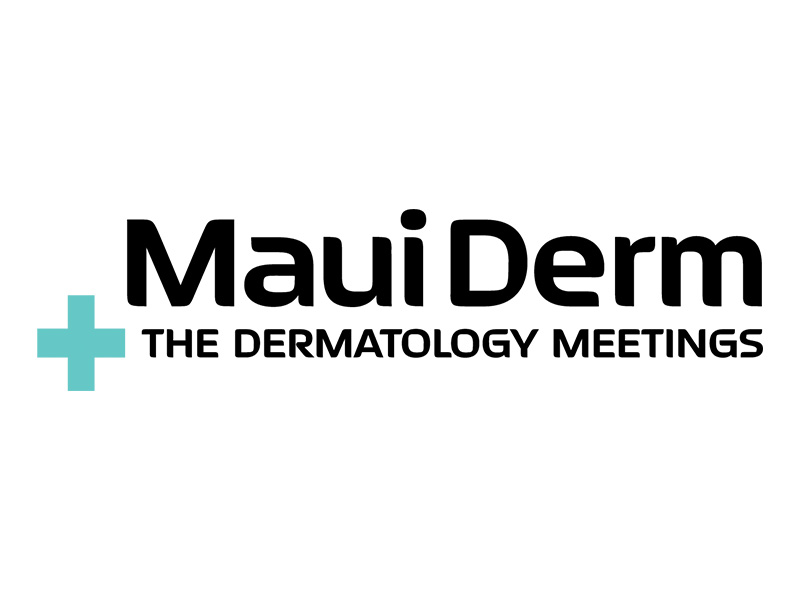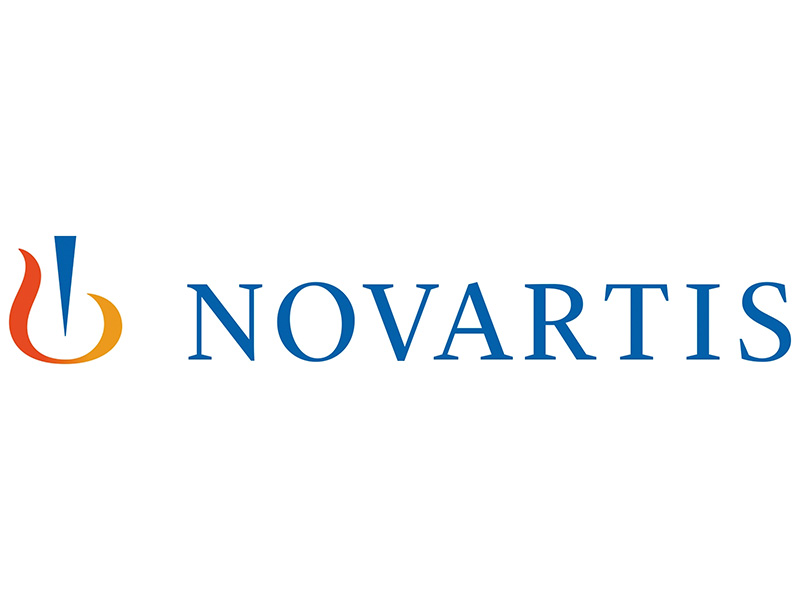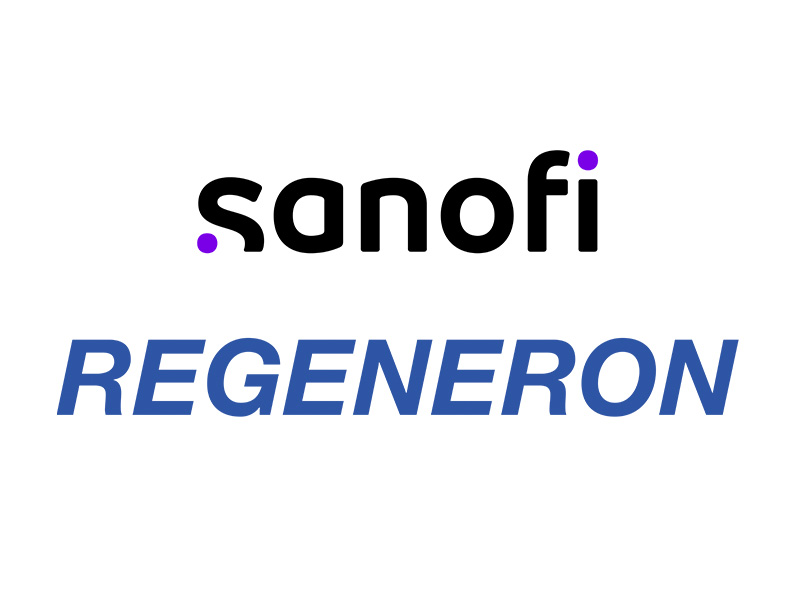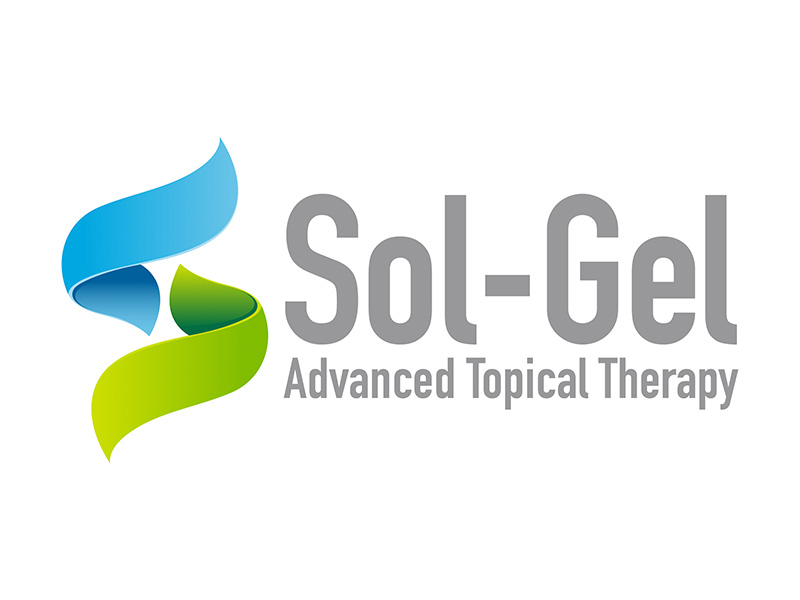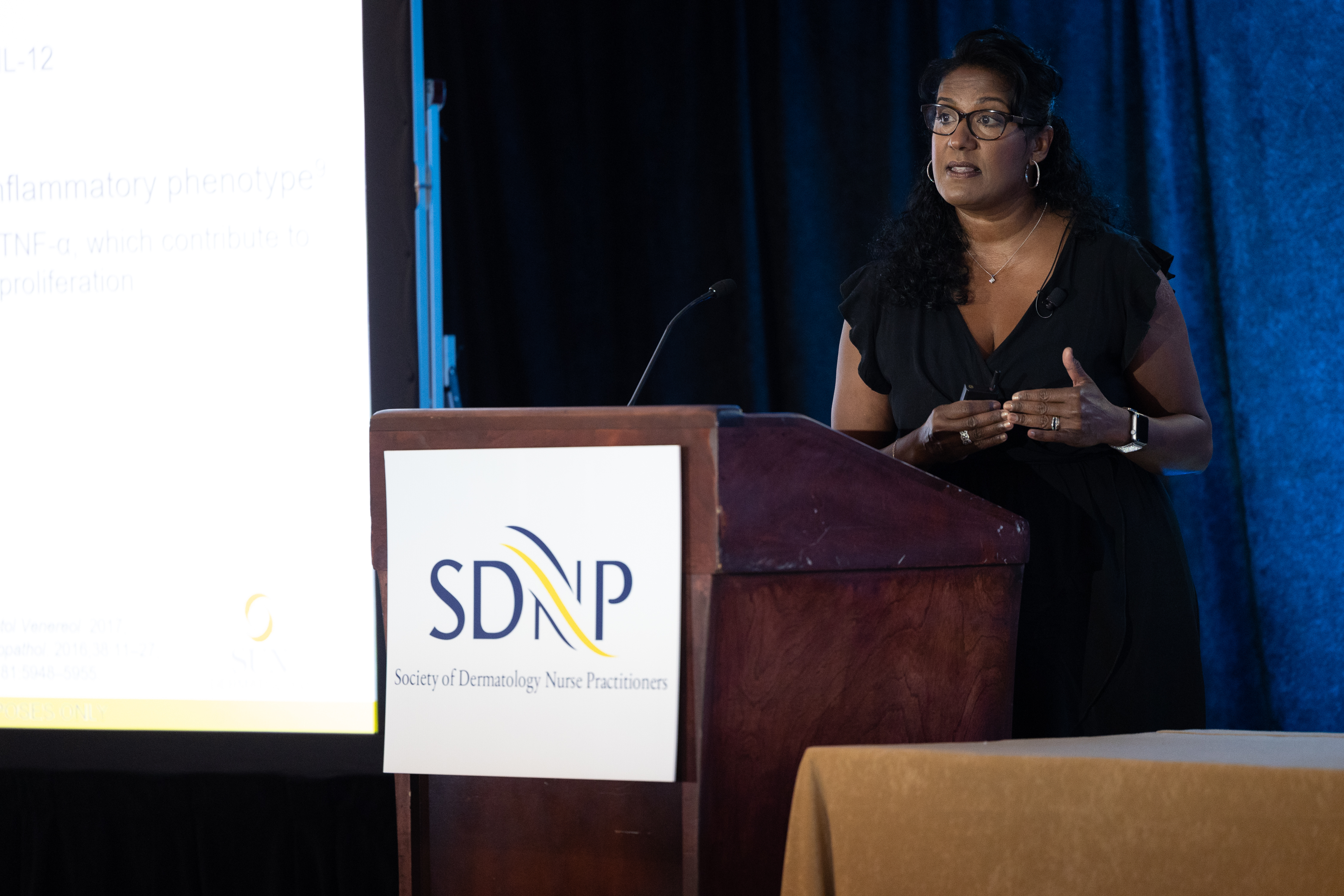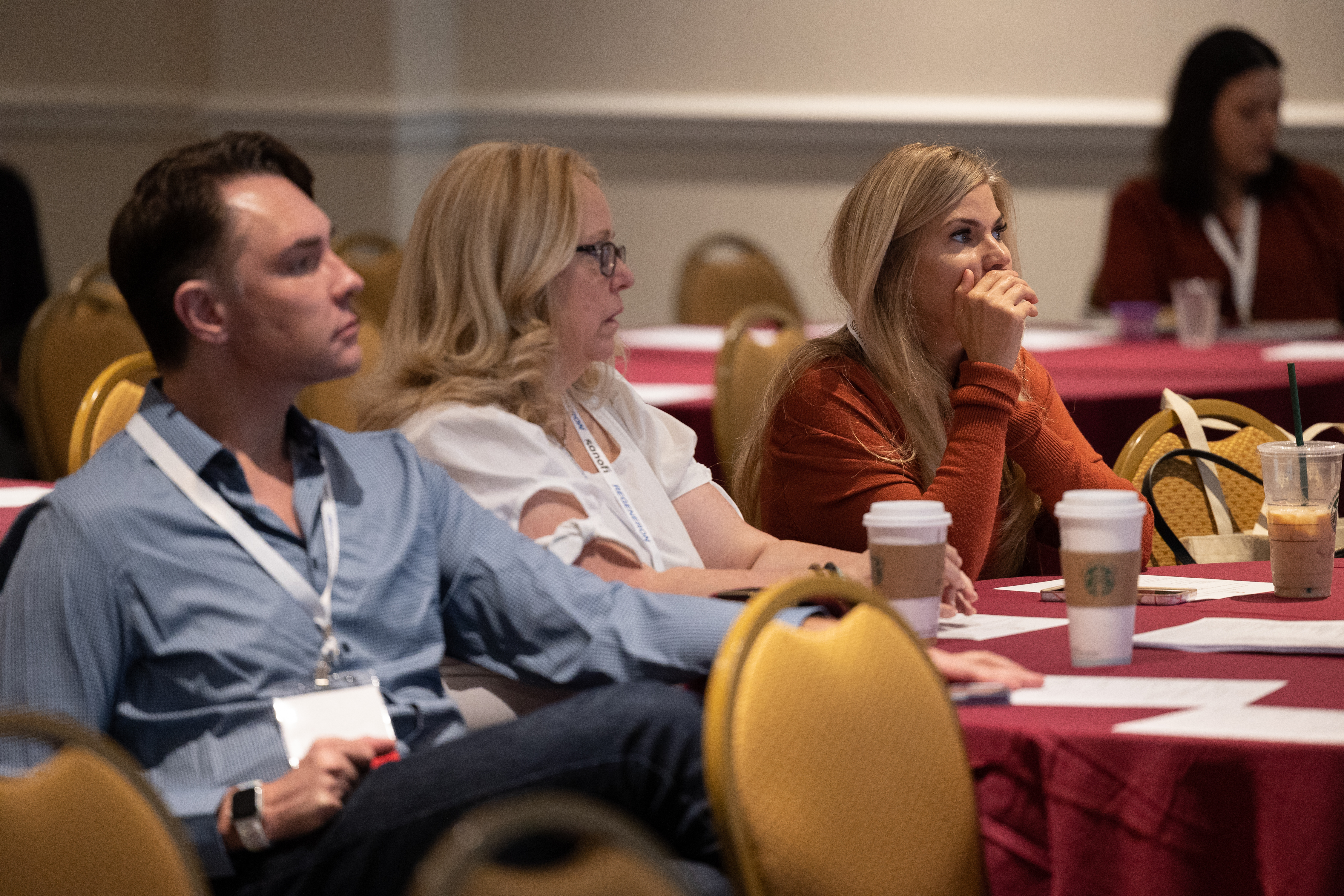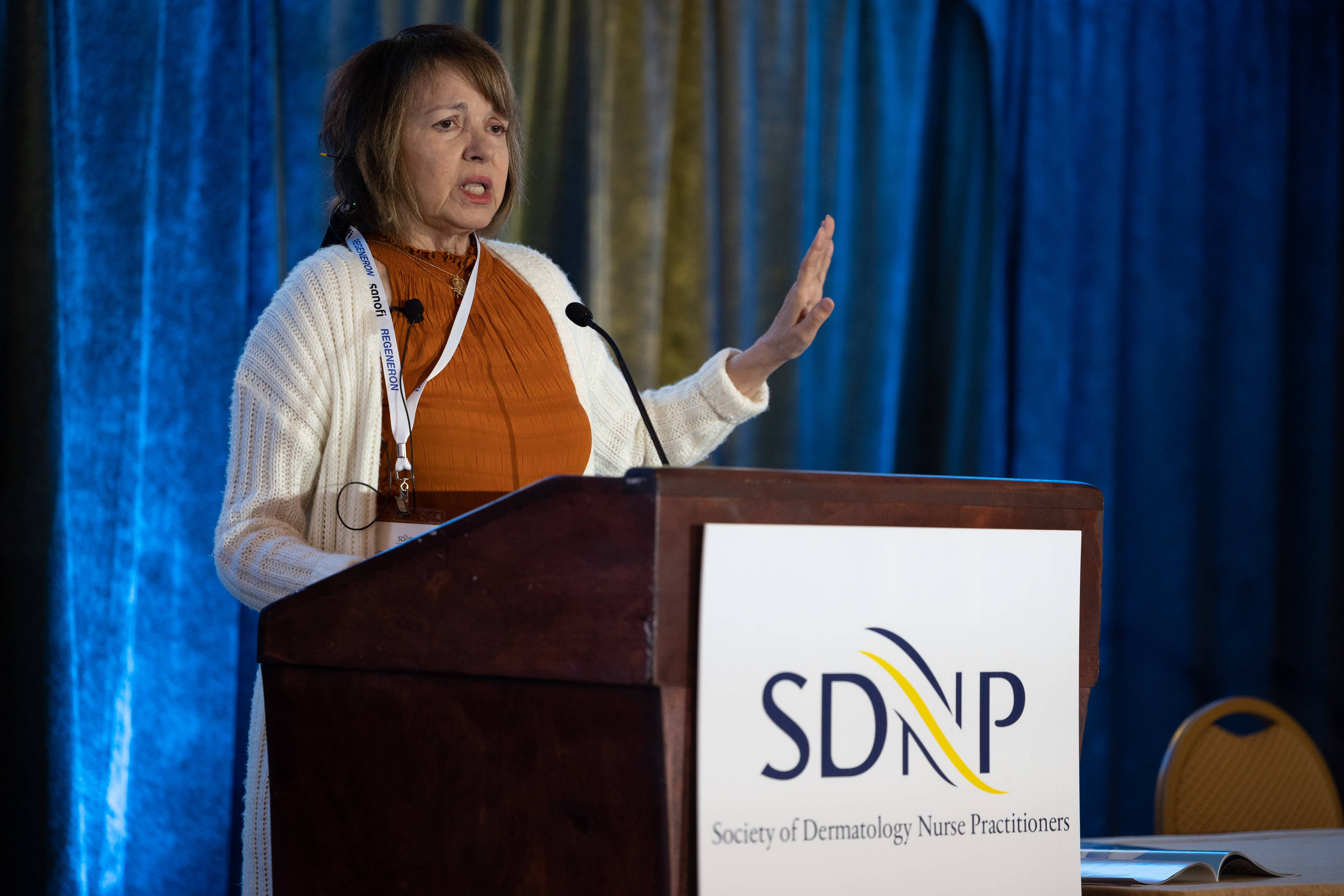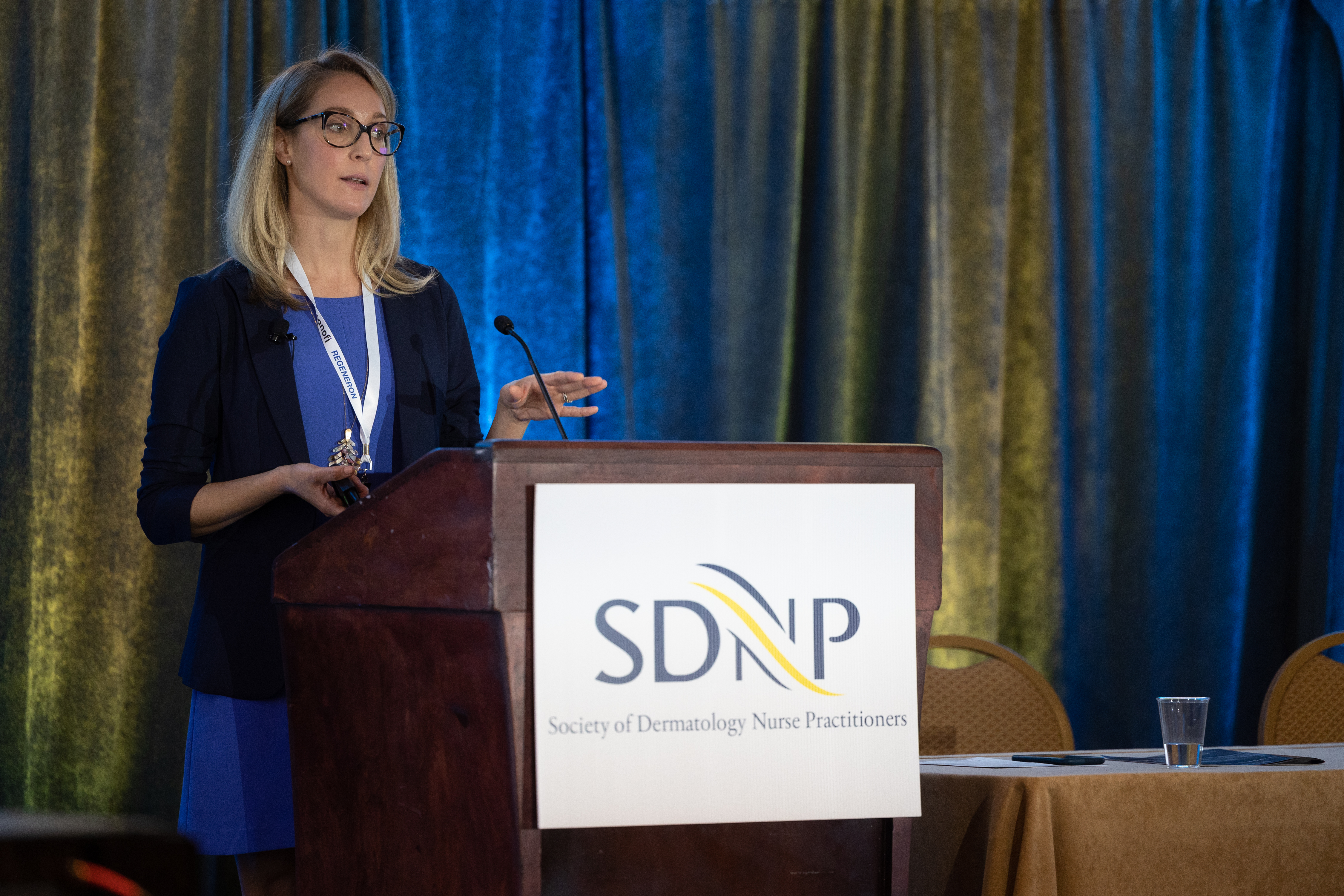Resources for You and Your Practice
Check out this excellent resource from the Hidradenitis Suppurativa Foundation regarding treatment management during the COVID pandemic. This is an excellent resource for both you and your patients!
https://www.hs-foundation.org/hidradenitis-suppurativa-treatment-and-covid-19-coronavirus/?acid=478763
Check out this EXCELLENT resource for both you and your patients! This site from the AAD titled “Clinical Guidance For COVID-19” is essential for your practice knowledge. The Academy’s COVID-19 Ad Hoc Task Force is constantly gathering the lastest data and making recommendations and updating practice guidelines that all NPs need to know. Tag this site to your “Favorites” bar as you’ll want to visit it often for the most up-to-date issues relevant to all dermatology practitioners.
https://www.aad.org/member/practice/coronavirus/clinical-guidance/?acid=478763
Information from Maui Derm:
Dear Colleagues,
As part of our continuing coverage of COVID-19 and SARS-CoV-2, we are pleased to present commentary on recent literature from Drs Andrew Blauvelt, Arthur Kavanaugh, James Krueger, Bruce Strober, and myself.
With aloha,
Dr. George Martin |
|
|
James G. Krueger MD, PhD
Center for Clinical and Translational Science
We are at a time where many questions remain about the risk of SARS-Cov-2 infection in the setting of immunomodulators that are used to treat psoriasis and other inflammatory diseases. In my mind, there are 3 questions that exist: 1) Does background treatment with any drug increase the risk of viral infection? 2) Does continued treatment with any drug alter the course of SARS-COV-2 infection/recovery? 3) Does continued treatment with any drug alter protective immunity that may result from an infection?
The first question does not have an answer at present and it will likely need to be answered when widespread antibody tests are available and virus exposure in the community can be quantified. With available information, the existence of large percentages of antibody positive individuals that did not have symptoms is problematic as the exposure of “at risk” patients may actually be much higher than we know today.
As to the second question, high levels of innate cytokines like TNF, IL-1, or IL-6 may be responsible for a “cytokine storm” in more severe cases and ongoing studies of cytokine antagonists in formal studies will shed light on this possibility. There is also an observation that high levels of innate immune responses can lower some anti-viral T-cell responses, particularly in older individuals, so a yin/yang of innate vs. adaptive immunity may be at play. Any answer to this question needs to be driven by data, with particular attention to outcomes of controlled studies in which infected patients are treated with IL-6 or other antagonists. Many of the psoriasis drugs in current use directly or indirectly suppress innate cytokines, so they might be beneficial in modulating an excessive host response during an active infection. On the other hand, the production of innate and adaptive interferons may be beneficial for limiting viral replication, so agents that directly limit interferon signaling such as some Janus kinase (JAK) inhibitors should be used with caution.
The third question is perhaps the most important and the most difficult to gauge. The protective immune response to SARS-Cov-2 is likely to involve the generation of neutralizing antibodies and virus-reactive T-cells. Type 1 T-cells (Th1 and Tc1) are required to generate IgG antibodies to neo-antigens and act as protective, memory/effector T-cells. The magnitude of both antibody and clonal T-cell responses may ultimately prove to be important for long-lasting immunity to SARS-Cov-2. Psoriasis patients have been shown to have an expanded Th1 T-cell population and we consider that these individuals are not normally at a high risk of viral infections. However, will any of the medications we use to treat psoriasis alter the immune response to the SARS-Cov-2 antigens (effectively neoantigens)? In this stage of the immune response, a number of psoriasis medications might limit the breadth and magnitude of the T-cell response, but careful studies of the impact of individual agents to administered neo-antigens has not been widely studied. TNF is classified as an innate, inflammatory cytokine but it also serves to co-activate T-cells in some settings and thus use of TNF antagonists might lower clonal responses or levels of interferons that are produced by activated T-cells. Considering ustekinumab, the inhibition of IL-12, considered to be a key driver of Th1 T-cell differentiation, with ustekinumab might negatively impact the T-cell response and/or levels of interferon-gamma that are produced by this T-cell population. Likewise, the use of of JAK inhibitors that block Jak2 or Tyk2 will inhibit IL-12 receptor signaling and may also have negative impacts on protective Th1 responses as well as signaling of innate interferons though cognate receptors. Other types of JAK inhibitors may also limit T-cell clonal expansion by blocking Jak3 or Jak1, which are required to mediate IL-2 and other cytokine signals that promote T-cell proliferative responses. Likewise, “non-selective” immune modulators like cyclosporine would be expected to severely limit T-cell expansion and effector immunity. Probably the lowest impact psoriasis treatments would be IL-17 pathway antagonists, as Type 17 T-cells do not have a demonstrated role in protection from viral infections. Even so, activated Th17 T-cells do produce IL-26 and IL-29 which have interferon-like actions and might contribute somewhat to anti-viral responses. Thus blocking IL-23 might be more impactful on IL-26 and IL-29 production than blocking IL-17 or its receptor in the treatment of psoriasis.
|
|
Bruce Strober, MD, PhD
Yale University, New Haven, CT
Central Connecticut Dermatology, Cromwell CT
In the setting of COVID-19, there is great uncertainty regarding the use of biologics and small molecule psoriasis therapies. With few exceptions, the current approach to therapy should closely resembles that which was employed prior to COVID-19. In fact, it is completely unknown if our commonly used drugs increase or decrease risk for the patient, regardless of the patient’s SARS-CoV-2 infection status. These are the primary questions regarding the current immunosuppressive biologic and small molecule therapies:
- For the uninfected, do they increase or decrease the risk of SARS-CoV-2 infection?
- For the infected, do they increase of decrease the risk of poor COVID-19 outcome?
Keep in mind that uncontrolled cutaneous and systemic inflammatory disease, such as either psoriasis or atopic dermatitis, could contribute to increased risk either prior to or during SARS-CoV-2 infection. It likely is best for the patient to have a chronic inflammatory disease well-managed in the setting of this pandemic. This is why all dermatologic providers should take with a grain a salt any recommendation related to switching or discontinuation of a patient’s currently effective therapy. Switches or discontinuations could actually do more harm by rendering the treated disease less well-managed. Similarly, not initiating effective therapies for patients with severe uncontrolled skin disease might be equally detrimental.
The commentary from Schett et al [1] is important, as it outlines how IL-23, IL-17 and IL-4/13 have no role in viral infection risk. Further, some of these cytokines, such as TNF and IL-17 might underpin the cytokine release syndrome that is believed to contribute to COVID-19 morbidity and mortality. Therefore, the blockade of these mediators might be helpful to infected patients. It is noteworthy that many of the drugs we might think of as “too broadly immunosuppressive” (e.g., tofacitinib and apremilast) are actually being studied in clinical trials for the treatment of COVID-19 (www.clinicaltrials.gov and http://www.pmlive.com/pharma_news/amgen_adds_otezla_to_the_covid-19_candidate_list_1339599). However, there is the possibility that timing is everything, as some drugs such as JAK inhibitors or cyclosporine, by broadly lowering immunity, might increase risk prior to SARS-CoV-2 infection, but are helpful during infection by blocking the ensuing cytokine release syndrome. Of note is an analysis of 86 patients with COVID-19 receiving biologic therapy for many different inflammatory diseases showing that they might be protected against hospitalization and worse clinical outcomes [2].
Outside the ability of TNF-a inhibitors to increase the risk of hepatitis B reactivation in chronic carriers, the data related to TNF-a inhibitors is comforting in the setting of COVID-19. This class of drugs creates increased risk for bacterial and fungal infections, but viral illness is not an issue [1]. Similarly, IL-23 and IL-17 inhibitors block cytokines not fully implicated in viral defense or have clinical trials data that refute the notion that patients commonly suffer from viral illness. This remains true for the IL-12/23 inhibitor, ustekinumab, sometimes thought as the safest biologic for psoriasis, with many clinical studies in psoriasis demonstrating its agnostic effect on viral illness. IL-17 inhibitors might show a slightly increased rate of upper respiratory tract infections, but this adverse event might be artefactual, as it is difficult to tease out from monilial infections that affect the oral, laryngeal and pharyngeal cavities and occur in 2-5% of all patients treated with this class of drugs.
What about methotrexate? Indeed, this drug should be viewed as broadly immunomodulatory, but in the author’s experience the constellation of adverse events related to methotrexate does not include viral illness. Further, pediatric patients receiving methotrexate may be safely immunized with live viral vaccines [3].
In summary, patients with psoriasis and atopic dermatitis should be treated currently much like they were addressed prior to the COVID-19 pandemic. Continuation of biologic and small molecule therapies that are effective is warranted, and treatment discontinuation and switching should be avoided. The only exception would be patients (especially, elderly) with comorbidities such as hypertension, diabetes and pulmonary disease. These “at risk” patients might benefit from a therapeutic hiatus, as long as psoriatic and atopic disease flare is monitored closely. Newly detected SARS-CoV-2 infection justifies drug discontinuation, with the awareness that long half-life medications take weeks to months to “wash out” of the patient, and therefore will be present throughout the patient’s COVID-19 illness. However, residual drug levels that inhibit “pathogenic” cytokines might actually be favorable in terms of clinical course [2]. Finally, after full recovery from COVID-19 (asymptomatic with negative SARS-CoV-2 testing) patients may be safely restarted on the same prior effective therapy.
1. Schett G, Sticherling M, Neurath MF. COVID-19: risk for cytokine targeting in chronic inflammatory diseases? Nat Rev Immunol 2020;20(5):271-72 doi: 10.1038/s41577-020-0312-7[published Online First: Epub Date]|.
2. Haberman R, Axelrad J, Chen A, et al. Covid-19 in Immune-Mediated Inflammatory Diseases - Case Series from New York. N Engl J Med 2020 doi: 10.1056/NEJMc2009567[published Online First: Epub Date]|.
3. Heijstek MW, Pileggi GC, Zonneveld-Huijssoon E, et al. Safety of measles, mumps and rubella vaccination in juvenile idiopathic arthritis. Ann Rheum Dis 2007;66(10):1384-7 doi: 10.1136/ard.2006.063586[published Online First: Epub Date]|. |
|
Arthur Kavanaugh, MD
Rheumatologist
University of California, San Diego
In this commentary in Nature Reviews Immunology, Schett and colleagues elegantly discuss the immunopathogenesis of several systemic inflammatory autoimmune diseases as well as the alterations in the inflammatory response and immune system related to COVID-19 infection. As the authors highlight, results from clinical trials targeting distinct components of the dysregulated immune response has helped inform our understanding of the etiopathogenesis of diseases such as rheumatoid arthritis, inflammatory bowel disease (IBD), psoriasis, spondyloarthritis (SpA), and atopic dermatitis. This "bedside to bench" approach has expanded our knowledge about the relative role, for example, of certain cytokines in these conditions, such as the crucial role of IL-17 and IL-23 in psoriasis (1). Such studies have also resulted in surprises, such as the failure of IL-23 inhibition in SpA and the failure of IL-17 inhibition in IBD.
The authors also describe much of what is known about COVID-19 in terms of the mediators involved in infection, viral clearance, and hyperinflammation. While an intriguing topic for discussion, what is known to date does not allow us to make clear recommendations to our patients with systemic immune diseases, as regards the potential risk of infection, and factors that influence the outcome of infection. One could hypothesize that the disease related inflammation may foster an environment for viral introduction and propagation, and so the diseases need to be controlled by our available immune modulating agents to control that. On the other hand, an increased risk for infection is something that is discussed with patients initiating virtually all of our therapeutic agents. In COVID-19 infections, there is rationale and some preliminary data suggesting that for those with hyperinflammation, therapeutic agents targeting IL-6 and possibly other inflammatory mediators may have benefit.
While these discussions may highlight the limitations in our understanding of the complexities of the immune response - which functions in chaotic cascades with myriad components, one thing is likely: Analysis of the data emerging from this current pandemic may provide us guidance that we can bring to our patients in future similar pandemic.
- Bravo A, Kavanaugh A. Bedside to bench: defining the immunopathogenesis of psoriatic arthritis. Nat Rev Rheumatol 2019;15:645-56. (Epub 4 Sep 2019). Doi: 10.1038/s41584-019-0285-8. PMID 31485004.
|
|
Andrew Blauvelt, MD, MBA
Oregon Medical Research Center
In an excellent paper in Nature Reviews Immunology, a rheumatologist, a dermatologist, and a gastroenterologist from Erlangen, Germany discuss biologic treatment of patients with chronic inflammatory diseases, including psoriasis, psoriatic arthritis, and atopic dermatitis. They effectively argue and conclude that most classes of biologics (including TNF, IL-12/23, IL-17A, IL-23, and IL-4/IL-13 blockers) utilized to treat chronic inflammatory diseases are likely to be safe in the context of the current COVID-19 pandemic. A word of caution is advised, however, on one type of drug class, JAK inhibitors, which may make patients more susceptible to viral infections in general. The bottom line is that the authors deliver a powerful science-based message that is extremely relevant to our patients, and we should take it to heart.
In a second article, published in the Journal of the American Academy of Dermatology, Lebwohl and colleagues review reported risks for upper respiratory tract infections (URIs) for psoriasis patients on biologics. They conclude that URI rates are comparable in psoriasis patients on biologics versus those on placebo. Of course, this does not confer absolutely safety for biologics regarding SAR-CoV-2 (the virus that causes COVID-19) infection, but being reminded of these data during our current public health crisis is reassuring.
Lastly, in two timely articles, one published in the New England Journal of Medicine and one published in the Journal of the European Academy of Dermatology and Venereology, groups of physicians working at New York University and Modena, Italy, respectively, describe initial outcomes of COVID-19 in patients with and without immune-mediated inflammatory diseases (including psoriasis) who were on immunomodulators at the time of their COVID-19 diagnosis. Thus far, given the caveat of small sample sizes, there does not appear to be a higher incidence of COVID-19 or worse outcomes in these patients compared to other types of individuals.
Despite many years of both clinical study-derived and real-world safety data in our patients using biologic therapy to treat these diseases, there still exist widespread misconception that biologics, in general, are unsafe. The key problem is that biologics are far too often lumped together in terms of safety. How often have we heard, “biologics do this,” “biologics do that,” and “biologics are associated with this and that.” Unfortunately, these statements and the views associated with them are antiquated. The term “biologic” is simply used to describe a drug that is created in a biologic manner, i.e., in cell culture, as opposed to being made through chemistry, as are most pharmaceuticals. The term “biologic” does not confer any insight as to the mechanism of action and/or the associated safety profile of a given drug. Understanding mechanism of action of any drug class, whether it’s a TNF, IL-12/23, IL-17A, IL-23, or IL-4/IL-13 blocker, helps inform us as to the distinct and unique safety profiles associated with each of these types of biologic. I have provided a simple Table below that I hope will help our readers make sense of infectious risk associated with each type of immunomodulatory drug that we utilize in our practices.
| Infectious Risk of Immunomodulatory Medications in Dermatologya |
| |
Therapies |
Infectious Risk |
| Group A |
IL-17 blockers
Secukinumab (Cosentyx)
Ixekizumab (Taltz)
Brodalumab (Siliq)
IL-23 blockers
Guselkumab (Tremfya)
Tildrakizumab-asmn (Ilumya)
Risankizumab-rzaa (Skyrizi)
IL-4/IL-13 blocker
Dupilumab (Dupixent) |
Little-to-no effect on viral immunity for any of these drugs.
Increased mucocutaneous candidiasis risk for IL-17 blockers.
Theoretical risk of parasitic infections for IL-4/IL-13 blockers.
|
| Group B |
IL-12/IL-23 blocker
Ustekinumab (Stelara)
PDE4 inhibitor
Apremilast (Otezla) |
Theoretical effect on Th1/viral immunity, but no actual increased incidence of infections, including viral infections, for these drugs. |
| Group C |
TNF blockers
Etanercept (Enbrel)
Infliximab (Remicade)
Adalimumab (Humira)
Certolizumab pegol (Cimzia)
JAK inhibitors
Tofacitinib (Xeljanz)
Baricitinib (Olumiant)
Upadacitinib (Rinvoq) |
Increased risk of infections (in general) for TNF blockers, especially intracellular bacteria and fungi.
Increased risk of infections (in general), including viral infections, for JAK inhibitors. |
| Group D |
Prednisone
Methotrexate
Cyclosporine
Azathioprine
Mycophenylate mofitil |
More broad-based immunosuppression for these drugs, which could increase risk of infections (in general), including viral infections. |
a based on Dr. Blauvelt’s experience and review of the literature
|
|
George Martin, MD
In a recent letter to the editor, Dr. Mark Lebwohl and colleagues addresses the issue: “should biologics for psoriasis be interrupted in the era of COVID-19? Using published data from pivotal clinical trials on biologic agents used to treat psoriasis, they compare the overall rates of upper respiratory infections (URI) and nasopharyngitis for each class of drug against its placebo.
While the clinical trial data is hampered by the low incidence of URI and nasopharyngitis, exact reporting and short placebo controlled periods, the respiratory infection rates on biologics “pre-coronavirus” were comparable to those with placebo. However, it is currently unknown if patients on biologics are more susceptible to COVID-19.
The authors also address the issues involved in stopping and reintroducing some biologics. This practice could result in the possible loss of response or antibody formation.
As clinicians, we are once again faced the inherent “risk vs benefit” that is at the core of all of our therapeutic decisions. In today’s COVID-19 world, the stakes seem much higher. |
|
Forecasting COVID-19 impact on hospital bed-days, ICU-days, ventilator days and deaths by US state in the next 4 months
This study presents the first set of estimates of predicted health service utilization and deaths due to COVID-19 by day for the next 4 months for each state in the US.
|
|
 |
| OBJECTIVE
To determine the extent and timing of deaths and excess demand for hospital services due to COVID-19 in the US.
DESIGN, SETTING, AND PARTICIPANTS
This study used data on confirmed COVID-19 deaths by day from WHO websites and local and national governments; data on hospital capacity and utilization for US states; and observed COVID-19 utilization data from select locations to develop a statistical model forecasting deaths and hospital utilization against capacity by state for the US over the next 4 months.
EXPOSURE(S)
COVID-19.
MAIN OUTCOME(S) AND MEASURE(S)
Deaths, bed and ICU occupancy, and ventilator use.
RESULTS
Compared to licensed capacity and average annual occupancy rates, excess demand from COVID-19 at the peak of the pandemic in the second week of April is predicted to be 64,175 (95% UI 7,977 to 251,059) total beds and 17,309 (95% UI 2,432 to 57,584) ICU beds. At the peak of the pandemic, ventilator use is predicted to be 19,481 (95% UI 9,767 to 39,674). The date of peak excess demand by state varies from the second week of April through May. We estimate that there will be a total of 81,114 deaths (95% UI 38,242 to 162,106) from COVID-19 over the next 4 months in the US. Deaths from COVID-19 are estimated to drop below 10 deaths per day between May 31 and June 6.
CONCLUSIONS AND RELEVANCE
In addition to a large number of deaths from COVID-19, the epidemic in the US will place a load well beyond the current capacity of hospitals to manage, especially for ICU care. These estimates can help inform the development and implementation of strategies to mitigate this gap, including reducing non-COVID-19 demand for services and temporarily increasing system capacity. These are urgently needed given that peak volumes are estimated to be only three weeks away. The estimated excess demand on hospital systems is predicated on the enactment of social distancing measures in all states that have not done so already within the next week and maintenance of these measures throughout the epidemic, emphasizing the importance of implementing, enforcing, and maintaining these measures to mitigate hospital system overload and prevent deaths.
|
|
|
Commentary: George Martin, MD
This is a comprehensive epidemiology modeling and forecasting of the current COVID-19 pandemic as it pertains to hospital bed stays, ICU-days, ventilator days and deaths by US states over the next 4 months. The model allows you to click on specific states to look at the projections over the next 4 months. Currently the model updates are dynamic and change on almost a daily basis.
Please be sure to visit the model and select your state. It is eye opening.
View the Interactive Model
|
|
|
|
Curious about the cutaneous manifestations of the COVID 19 virus? This is a great resource from the University of Nottingham Centre of Evidence Based Dermatology that houses all relevant articles and is continually updated! Check it out!!!
https://www.nottingham.ac.uk/research/groups/cebd/resources/coronavirus-resource/skin-manifestations.aspx
Get 90-day free access to VisualDx.
VisualDx is "committed to #raisetheline and #flattenthecurve by offering 90-day free access. #RaisetheLine is an effort from the healthcare community to increase total capacity during the COVID-19 crisis. There’s an urgent need to add more providers to the front line and to move non-critical cases to telemedicine. Clinicians can provide better quality care by utilizing VisualDx, a trusted decision support solution.
This offer is valid for healthcare workers and clinicians in the United States and Canada only. Offer includes one individual subscription to VisualDx for 90 days. Fill out the form below to receive your product key. The product key can be activated anytime between now and May 31, 2020. The 90-day subscription begins when the product key is activated. NO credit card is needed. New customers only." Click Here to access this benefit!

Cutaneous Squamous Cell Carcinoma (CSCC) incidence is on the rise.
The France Foundation is pleased to offer this free MOC/CME/CE activity on 1 of the most common cancers seen in dermatology practices. The dermatology care team needs to be aware of the latest treatment options and how to recognize high-risk patients.
CLICK HERE TO START ACTIVITY!

|
Moderated by:
Michael K. Wong, MD, PhD, FRCPC
CSCC Expert and Professor of Melanoma Medical Oncology
The University of Texas MD Anderson Cancer Center
|

|
Case analysis by:
Chrysalyne D. Schmults, MD
CSCC Expert and Associate Professor of Dermatology
Harvard Medical School
|
- Available for CME and MOC credit
- Interactive, video-based learning experience
Hey, fellow NPs! Are you working from home and calling or video-chatting with your patients? Are you using your home landline or cell phone and concerned about HIPAA/privacy issues or the patient’s seeing your personal phone numbers? Here’s a great resource that is also HIPAA-secure! I use it all the time and it’s easy, convenient and FREE!
|
Free telemedicine video calling is now available in the Doximity app for iPhone and Android. It’s HIPAA-secure and requires no additional install for your patients. Here’s how it works:
- Open the Doximity app to Dialer
- Enter your patient's phone number
- Tap the green Video Call icon to start the video call
It’s as simple as that!
All verified Doximity users can use Doximity Dialer to call patients, go straight to voicemail or do a video call while displaying their office phone number on the CallerID.
Read more about this new feature and review our FAQs here!
|
|
Wonder what immunity to the COVID-19 virus really means? Here’s the answer!: https://www.scientificamerican.com/article/what-immunity-to-covid-19-really-means/
AAD has developed advice on a broad range of topics to be considered during the pandemic including guidance on management and initiation of biologics.
Please Note: This information is subject to change and does not imply the endorsement of any product.
The Medical Board of the NPF has also developed advice on patient and practice management, including guidance for managing patients currently on a biologic therapy.
HS Foundation (HSF):
The HS Foundation is recommending patients talk with their healthcare professionals about their treatment plan and has a podcast sharing expert insight into what COVID-19 means for dermatologists and their patients with Hidradenitis Suppurativa.
Federal Government Agencies: Information on COVID-19 may be found from these important resources:
US Food and Drug Administration (FDA): https://www.fda.gov/emergency-preparedness-and-response/mcm-issues/coronavirus-disease-2019-covid-19 FDA is working with U.S. Government partners, including CDC, and international partners to address the COVID-19 outbreak.
This is an excellent article on the risk of infection with each of our immunosuppressive drugs used in dermatology. A must see for Derm NPs!: COVID BIOLOGIC CLASS INFECTION RISK--Blauvelt.pdf
Infectious Society of America Recommendations for the Treatment and Management of Covid-19: https://www.idsociety.org/globalassets/idsa/practice-guidelines/covid-19/treatment/idsa-covid-19-gl-tx-and-mgmt-v1.0.3.pdf
Do you have a psoriasis patient who has tested positive for the COVID-19 virus? Here’s what you need to know!
The Surveillance Epidemiology of Coronavirus Under Research Exclusion (SECURE-PSO), an international database available for Dermatology professionals to register their patients with COVID-19 so the impact of COVID-19 on psoriasis patients can be better understood. SECURE-PSO is the largest, most advanced, international, pediatric and adult database to monitor and report on outcomes of COVID-19 infection in PSO patients in real time. The database is de-identified and a report takes less than five minutes to complete. This project is being led by Steven Feldman, MD PhD and William Huang, MD MPH at Wake Forest School of Medicine.
To learn more, review the flyer below and visit: http://covidpso.org/. Please direct any questions about SECURE-PSO to [email protected].
|



